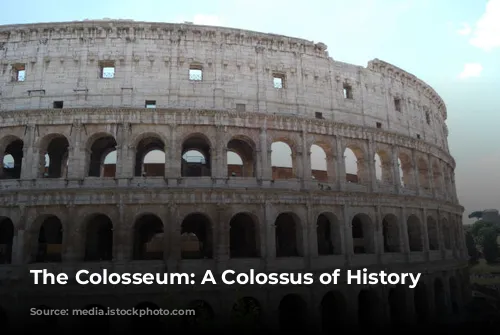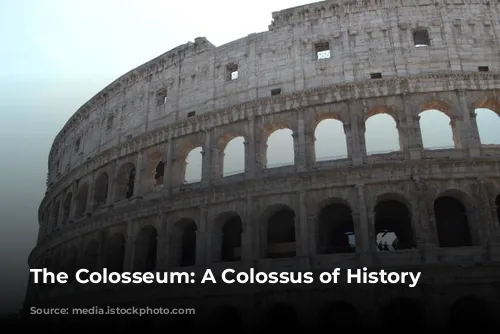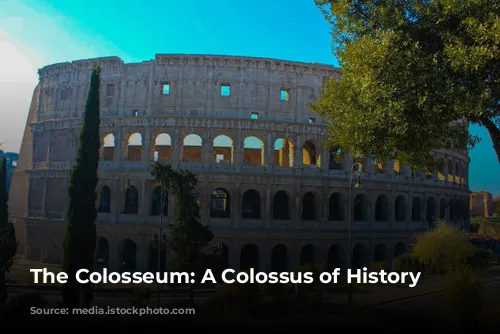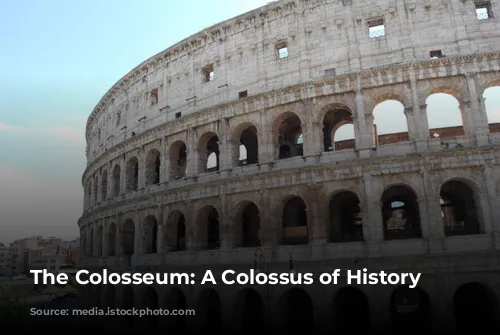The Colosseum, also known as the Flavian Amphitheatre, is not just the largest and most imposing amphitheatre in the Roman world, but also a symbol of Rome itself. Emperor Vespasian started its construction, and his son, Titus, inaugurated it with a spectacular 100-day opening ceremony in 80 AD.
This lavish event featured gladiatorial combats, animal hunts, and even naumachiae, elaborate mock sea battles. Suetonius, the Roman historian, recorded that over 5,000 animals were killed during the festivities. The Colosseum was truly a stage for grand spectacles.
A Name Steeped in Legend
But why does the world know it as the Colosseum? The answer lies in a medieval prophecy by the Venerable Bede, who declared that “Rome will exist as long as the Colosseum does; when the Colosseum falls so will Rome; when Rome falls so will the world.” He might have drawn inspiration from the Colossus of Nero, a 35-meter-tall statue of the emperor that once stood near the amphitheatre.
Architectural Marvel: A Triumph of Roman Engineering
The Colosseum stands as a testament to Roman ingenuity. This elliptical structure boasted four floors, each adorned with eighty arches. The second and third floors were even further embellished with towering statues. The entire construction, a marvel of engineering, was completed in less than a decade.
The Romans were masters of the arch, a structure that allowed them to distribute weight effectively. This architectural principle is evident in their aqueducts, and the Colosseum can be seen as a series of stacked aqueducts.
A History of Change and Degradation
Today, we only see the skeleton of this once-glorious arena. Three-fifths of the outer brick wall are missing. Sadly, the Colosseum served as a quarry in the Middle Ages, providing marble, lead, and iron for the construction of buildings like Barberini Palace, Piazza Venezia, and even St. Peter’s Basilica.
The scars of this pillaging remain visible on the columns, where holes were made to extract the lead and iron used for nails in the marble blocks.
A Stage for Spectacle and Social Hierarchy
Despite its losses, the Colosseum still whispers of its past. It could accommodate up to 70,000 spectators, who were seated according to their social status, much like modern theaters. The top tiers were for the common people, with separate sections for men and women. As you moved closer to the arena, the higher your social status, with senators, vestals, priests, and the emperor occupying the front row.
A Roof Against the Sun, a Stage for the Gladiators
Like today’s sports stadiums, the Colosseum offered protection from the sun with its velarium, a massive linen awning. This ingenious system involved ropes, winches, and wooden poles that circled the top of the outer wall. One hundred sailors from the imperial fleet were needed to maneuver this complex structure, moving it in perfect synchronization with the beat of a drum.
Beneath the Arena: A World of Secrets
Looking down into the Colosseum today, you can still see the cellars, which housed the equipment used to stage the games. These underground floors contained lifts and hoists with counterweights, which were used to raise animals and gladiators through trapdoors, creating dramatic surprise entrances for the audience.
These intricate systems also allowed for the hoisting of elaborate backdrops, transforming the arena for hunting events.
The Gladiators: Heroes of the Arena
The heart of the Colosseum was the arena, a stage for a wide variety of spectacles. Venationes, or animal hunts, were popular morning events, sometimes ending with public executions. Silvae, elaborate reconstructions of forests, featured exotic animals, though these were not always killed.
But the most popular event was the gladiatorial combat. After a midday break, the gladiators entered the arena from a passageway connected to the Ludus Magnus, their barracks. They were welcomed by cheering crowds, much like today’s sports heroes. After a brief procession, they saluted the emperor with the famous phrase “Ave Caesar, morituri te salutant” (Hail Caesar, those who are about to die salute you).
Gladiators were not always forced into the arena. Some were prisoners of war who chose combat over slavery, while others were simply impoverished individuals seeking wealth and fame. Gladiatorial combat was a lucrative profession, attracting the attention of women who would pay handsomely for a night with these celebrated warriors.
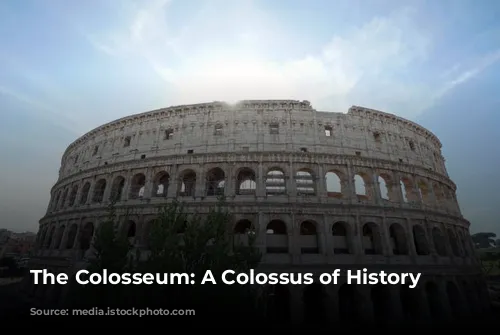
Blood and Spectacle: A Glimpse into Roman Entertainment
The Romans were not known for their squeamishness. They relished violent spectacles, similar to today’s “splatter” cinema, but with a raw reality that made it all the more shocking. The smell of blood, burnt flesh, and wild animals pervaded the arena, and even incense and perfumes could not mask the unpleasant stench.
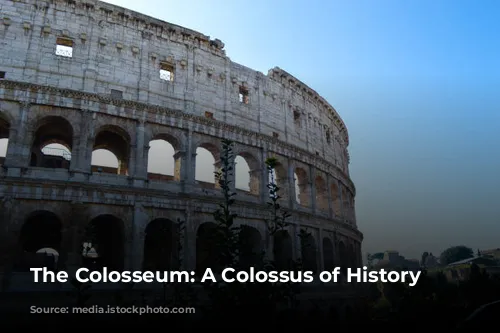
A Monument Transformed: From Arena to Sacred Site
After the fall of the Roman Empire, the Colosseum fell into disuse, becoming home to confraternities, hospitals, hermits, and even a cemetery. In the Middle Ages, it faced demolition, but Pope Benedict XIV declared it a sacred monument dedicated to the Passion of Christ, placing a cross on a pedestal as a symbol of the suffering of Christian martyrs. This cross still marks the starting point of the Stations of the Cross on Good Friday.
The Colosseum, once a symbol of Roman power and spectacle, became a place of Christian worship and a monument to the enduring power of history.
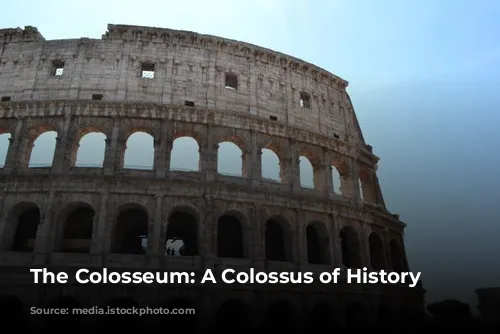
A Ghost of Ancient Rome: A Timeless Legacy
Today, visitors to the Colosseum are transported back in time. The ghost of ancient Rome, as Charles Dickens wrote, lingers over the site, reminding us of the grandeur and brutality of the Roman world. The Colosseum continues to draw millions of visitors each year, standing as a timeless testament to the enduring power of history and a reminder of the complexities of human nature.
